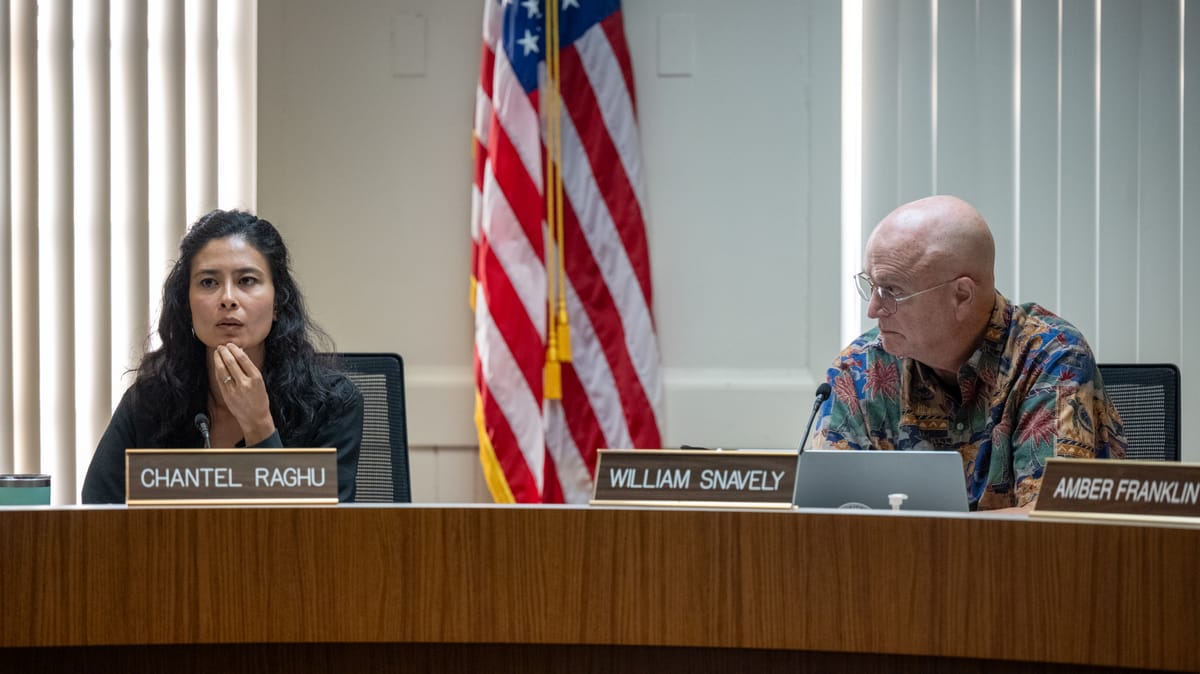Oxford City Council discusses deer management options
Updates and suggestions to strengthen the city’s deer management program, including a potential partnership, were discussed.

The Oxford City Council met on Aug. 5, where deer management was largely discussed.
Oxford Assistant City Manager Jessica Greene spoke to the council about updates to the city’s deer management program.
She shared her research and a variety of options to help combat the deer problem in Oxford. The first option is improving the current program.
Decreasing acreage for hunting grounds from five to three acres, as well as creating a rotation schedule for hunters that can be coordinated between neighbors, is a viable option, according to Greene.
Data collection is another area of improvement needed for Oxford’s deer management program. Currently, data is collected via police reports of deer collisions, which are not always reported by individuals. Green suggests that counting the number of deceased picked up by the city is a better scale for data collection.
Surveying current deer conditions in Oxford would help the city determine the current size of the population in the area. Greene aims for the survey to be conducted in November or December.
Another option for the city is to contract with a third-party company. Greene expressed interest in White Buffalo, a nonprofit organization that focuses on the conservation of ecosystems and native species.
If implemented in Oxford, White Buffalo would come onto a property in the early hours of the morning, where they would lure deer to walk into a specific location and then kill them silently with a suppressed weapon.
There are a few benefits to using White Buffalo, such as limiting public outcry.
White Buffalo and the city would work together to eliminate 100 deer at a cost of $40,000 for the city.
According to Greene, other cities that have used White Buffalo have seen success.
If White Buffalo is used, Green hopes to work with local law enforcement to determine effective areas for White Buffalo to work with cooperative private land owners. White Buffalo is interested in half-acre parcels, labeling them as target areas for deer management.
White Buffalo suggested killing 40% of the deer in Oxford to even out the population. They offered to kill 120 deer for $120,000.
After the initial professional management program, White Buffalo suggested a maintenance plan to be implemented. This program would rotate every five years and move around the city annually.
“This is not a one-and-done approach,” Greene said. “This will need to be done consistently and paired with our local deer management program.”
Greene believes that if the city decides to work with a professional partner, such as White Buffalo, the city should consider budgeting annually for five years.
Next steps were proposed by Greene, which included speaking to neighborhood partners in hopes of allowing hunters on their property, answering questions that could be presented by these property owners.
In this proposal, White Buffalo would start their survey work in November or December of 2026, while the management aspect of their work would commence in February of 2027.
Council members Chantel Raghu and Amber Franklin agreed a more holistic approach regarding Oxford’s ecosystem and viewing deer management through a more sustainable viewpoint should be considered.
Raghu requested more research and further discussion about education and maintaining a more appropriate ecosystem.
Mayor William Snavely expressed the importance of getting something ready to be voted on soon.
Oxford resident Barbara Smyth spoke to the council to share her support of the management program as well as the dangers of the animal.
She cited automobile accidents with deer as a growing issue in Ohio.
“Ohio has had over 105,000 accidents in the past five years with deer,” Smyth said. “1,000 of those were in Butler County.”
The Ohio Department of Insurance states that the average deer collision in the state of Ohio costs around $5,000.
She added her concern for pet safety, stating that “does with fawns are known to attack dogs.”
“I have had a firsthand experience with this while walking along Hilltop [Road] on the road with a dog on a leash,” Smyth said, “a doe with fawns nearby came to attack the dog.”
Smyth said her two children were with her for the incident.
Charlie Stevens, an Oxford resident for 27 years and co-president of Wild Ones, discussed Oxford’s ecosystem to the council.
“Our goal is to increase biodiversity,” Stevens said. “The way you do that fundamentally is to plant native plants.”
Having native plants encourages the insect population, which in turn strengthens an ecosystem.
Stevens supported the population management solutions discussed in the council meeting.
“The reason that deer management is important to us,” Stevens said, “is because deer will eat native plants first.”
Stevens notes that the animal’s population in Oxford has gotten to a point where they will eat any kind of plant due to hunger during the winter months.
“Part of our concern is focusing on Oxford,” Stevens said. “[We] are all talking about deer management.”
Wild Ones is holding a meeting at Lane Library in Oxford on Sunday, Sept. 21, at 3 p.m. to discuss deer management in the area.
The Oxford City Council will meet on Aug. 19 at 7:30 p.m. at The Oxford Courthouse.




